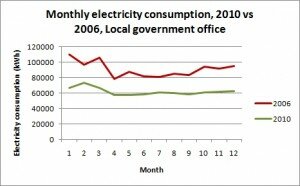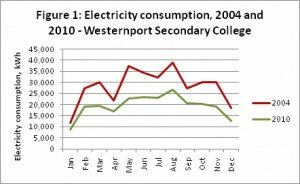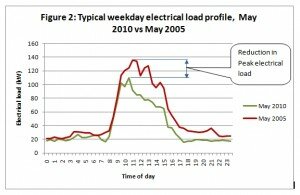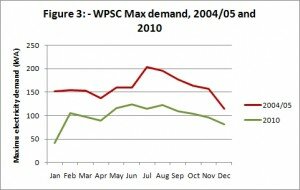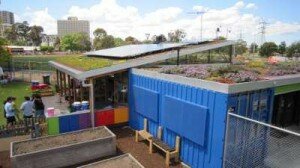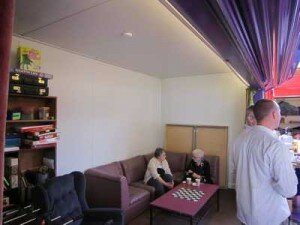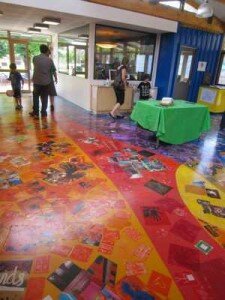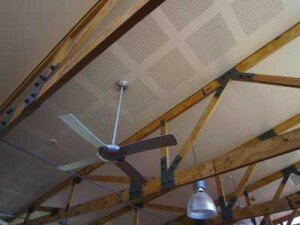A zero net energy building is one that produces as much energy as it uses. Yet, to my knowledge, there is not one commercial building in Australia that has been converted to zero net energy use. Its challenging, but not impossible. I’m looking for someone who wants to take up the challenge with us and demonstrate leadership in what can be done with existing buildings.
The imperative for buildings with zero net carbon emissions exists in climate change. It is not practical to tear down all our existing buildings and replace them with new zero net energy buildings. Additionally, the embodied carbon in new buildings is high. There is a strong rationale for taking existing buildings and turning them into buildings that have zero net carbon emissions in their operation. Yet, while I believe this is achievable in many climates (such as Melbourne) with current technology, we are not yet doing it. So I’m looking for someone who wants to demonstrate leadership and start blazing the trail for other building owners to follow.
Globally there is growing support for Zero Net Energy Buildings, and a number of such buildings already exist. The Department of Energy in the US launched it Zero-Net Energy Commercial Building Initiative two years ago in August 2008. It aims to have such buildings marketable by 2025. It hosts a database (http://zeb.buildinggreen.com/) that features eight buildings that have already achieved this status, ranging in size from 1,530 to 13,600 square meters. One of these is the IDeAs Z Squared Design Facility, a 1960 two storey office in San Jose California that was transformed into a zero net energy building in 2007.
Another example is the Zero Energy Office in Malaysia, built in 2008 and owned by PMT. This building achieves zero net energy in a challenging climate. Singapore also has a 4,500 m2 zero energy building, which was a retrofit, at an academic campus.
We have helped several of our clients achieve energy savings of 50% or close to 50%. I’m itching for the opportunity to go all the way and get a year round 100% reduction in energy imported from the grid, whilst delivering a workplace that is comfortable and healthy. This is extremely challenging, as energy use needs to be reduced to around 30kWh/m2/year for a single storey building – and even less than this for multi-storey – and then the roof covered with solar panels to generate all the energy the building uses year round. But I’m confident it can be achieved. In our existing leased premises we are using just over 30 kWh/m2/year. I know it’s possible to get energy use this low on the top storey of a building (which we are) or in a single storey building. A relatively narrow multi storey building, would also be suitable, but even more challenging.
And the economics? I think that zero net energy use could be achieved at little extra cost with an existing building that was in poor condition and due for a major refurbishment, including a complete changeover of the existing HVAC system. It won’t be cheap, as zero net energy in Melbourne means a building that is very well insulated and sealed, has a good amount of thermal mass, and has good control over how the sun gets into the building. But if the building is in a bad state anyway, a fair bit of money will need to be spent in any case. The aim would be that anything extra spent on the refurbishment to achieve zero net energy would pay for itself in less than ten years in the energy savings.
Prerequisites are:
- Single storey, or reasonably narrow multi-storey building no more than 4 storeys high.
- Building must be a commercial building – for example, an office, library, etc – cannot be residential or industrial.
- At least 1,000m2, but preferably in the range of 2,000 to 5,000m2 in area.
- Building must be structurally sound.
- Owner who:
- Wants to have the first, or one of the first, existing commercial buildings in Australia to be retrofitted for zero net energy,
- Is willing to really engage actively in the process,
- Wants to stand up, be seen as a leader, and promote the concept of zero net energy building refurbishments.
- Is ready to start now.
Please get in touch with me if you own such a building and are interested, or know of someone who is, or, if you are an investor and are willing to buy an existing building and turn it into a showcase.
Bruce Rowse


